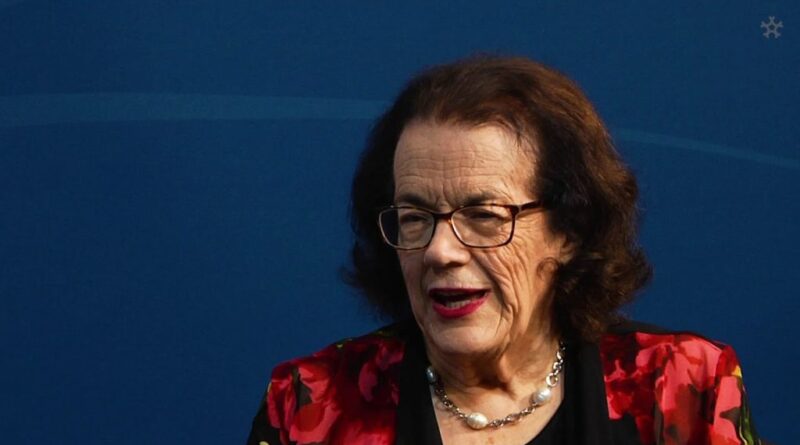‘A budget for mums and middle Australia’: Jim Chalmers

As it looks to an election next year when holding up Labor’s female vote will be vital, Treasurer Jim Chalmers has declared Tuesday will bring “a budget for mums and middle Australia”.
“The primary focus of our economic plan is to help ease inflation and the cost of living, with a big focus on delivering more help for middle Australia and more help for mums,” Chalmers said on Sunday, in rhetoric targeted to match mothers’ day.
“Whether it is a bigger tax cut for more than 90% of women, paying superannuation on paid parental leave, wiping HELP debt, or funding wage increases in aged care and childcare, the women of Australia will be big beneficiaries of the budget.”
While women will be a prime political target, economically the budget – the Albanese government’s third – will be substantially judged on its implications for inflation.
Reserve Bank Governor Michele Bullock stressed this last week, when she flagged the bank would lift rates if that became necessary. The government needs a rate cut before the election.
New forecasts released by Chalmers on Sunday show inflation has moderated faster than treasury expected in its December mid-year budget update. Then, treasury forecast inflation to be 3.75% through to the June quarter 2024. The most recent annual figure showed inflation already ahead of this forecast, at 3.6% through the year to the March quarter. The budget now has annual inflation at 3.5% through the year to the June quarter 2024.
The government said its cost-of-living policies were helping the moderation in inflation.
“As a result of our policies. Treasury is forecasting that headline inflation could return to the [Reserve Bank] target band [2-3%] by the end of 2024. This would be earlier than the 2025 timeframe they forecast” in the mid-year update.
While the new forecasts show inflation returning to the Reserve Bank’s target band slightly sooner than the December forecasts, they show it remaining higher for longer – staying at 2.75% in the year to June 2026, rather than falling to 2.5% as forecast in December.
Both sets of forecasts are good deal more optimistic than the Reserve Bank’s forecasts released on Tuesday last week.
These have inflation staying above the Reserve Bank’s 2-3% target band until late 2025. The forecasts in Tuesday’s budget will have it returning to the top of the target band late this year.
In the papers accompanying the release of its inflation forecasts, the bank said the unwinding of legislated electricity rebates was expected to add 0.25 percentage points to year-ended headline inflation in the year to December.
Any decision in the budget to extend or replace the rebates would mitigate this effect, taking pressure off inflation. Some energy cost relief is expected although Chalmers has indicated it is likely to differ from the earlier relief.
The Australian Bureau of Statistics has credited the increases in Commonwealth rent assistance in the 2023 budget with taking 1.7 percentage points off the rent increases in the consumer price index, producing recorded increases of 7.8% in the year to March this year instead of 9.5%.
Any further increase in rent assistance in this budget will take further pressure off increases. Some more help is expected although it could be less than. last year.
Chalmers said the difference between the Reserve Bank and budget forecasts on inflation was due to the bank’s figures coming before the budget and so not taking its measures into account.
The budget downgrades growth forecasts compared to the mid year update. Real GDP is forecast to grow 2% in 2024-25 and 2.25% in 2025-26. This is a quarter of a percentage point lower in both years than in the December update.
The budget papers say there is “considerable uncertainty around the outlook for the domestic and global economy”. Given the uncertainty about inflation, forecasting is even more difficult than usual.
Emphasising how the budget will assist women, Chalmers said the recently announced decision to pay superannuation on Commonwealth paid parental leave will cost $1.1 billion over four years from 2024-25, and an ongoing $623.1 million a year.
Of the about $3 billion in HELP debt expected to be written off under the rejigged indexation arrangements, about $1.75 billion is expected to be written off for women.
The budget will also make a multi-billion dollar provision towards wage increases for early childhood education and aged care workers. But details will be settled later and there will be phase in arrangements.
Chalmers told Sky he expected the government would run full term – the election is due by May next year – and he would deliver a fourth budget before it.
“The reason why that is less relevant to me than you might anticipate is because what I’ve tried to do with this budget […] is to make the budget right for he economic cycle rather than the political cycle.”

